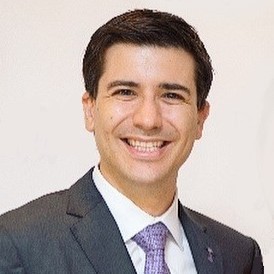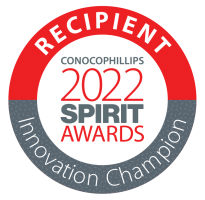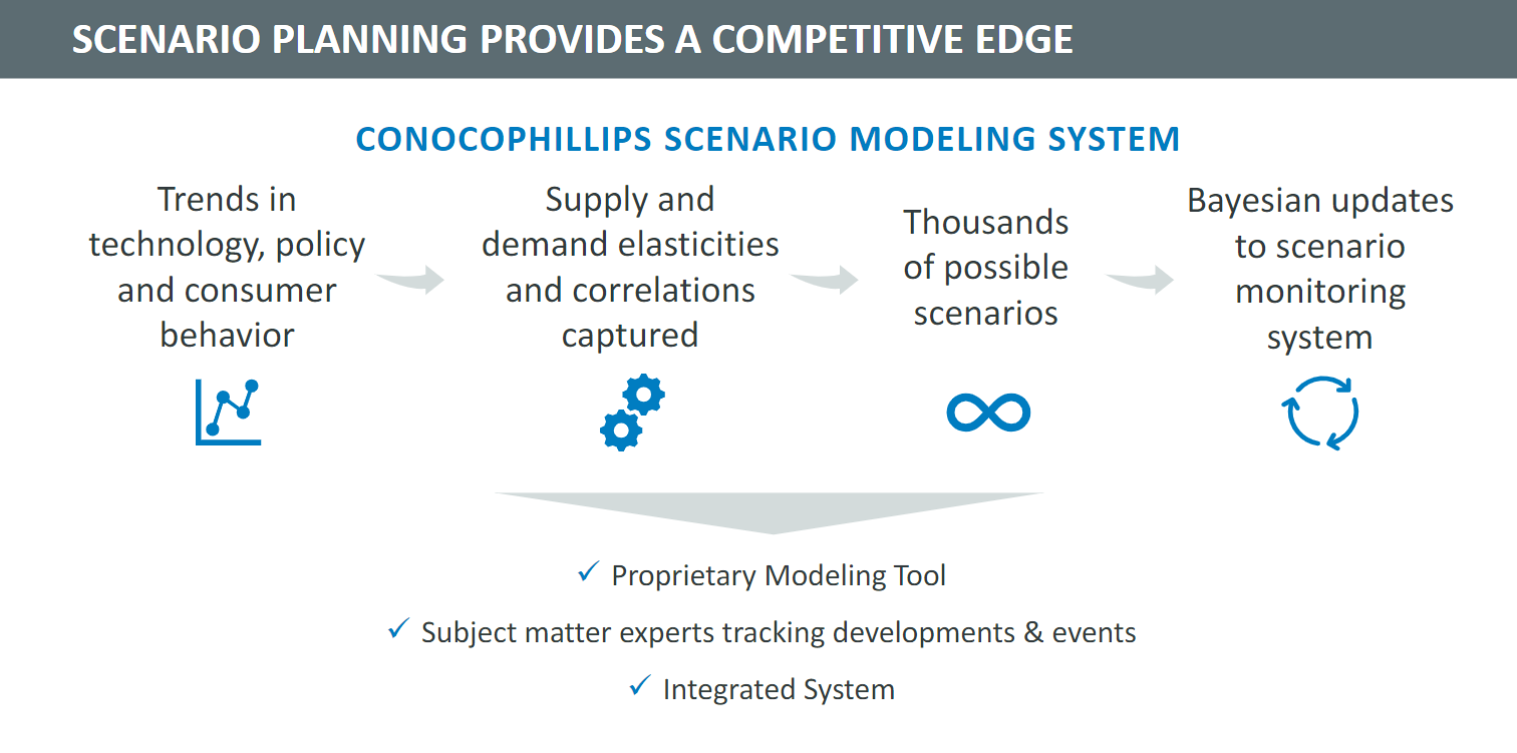ConocoPhillips recently recognized Nico Roussel for his technical accomplishments that have helped lower cost of supply.
BY GUS MORGAN
The first thing Nico Roussel did after buying a house in the Houston Heights was to buy his first piano, a 1904 Steinway. The purchase reflected his passion for classical music; the handmade instrument enabled him to turn back the clock to his youth when he was a pianist at the Brest Conservatory of Music in France.
“It was a terrible decision, financially,” he said, “but it sounds amazing, and it’s a piece of art in itself.”

A trustee for the Houston Grand Opera , Nico’s enthusiasm for the arts seems boundless.
“I also sing with my wife, Teresa, who is a Grammy-winning opera singer. I’m lucky to be able to play for her and sing with her. I’m a better pianist than singer. Supporting the arts in Houston is a passion of mine.”
Inspired by classical music
When Nico Roussel was 16, he graduated from the Brest Conservatory of Music in France and considered becoming a professional pianist. “Financially, it just wasn't really a possibility, but the nice thing is that teaching piano allowed me to save money and go to the United States. I’m here today thanks to my early start in piano.”
Defying the left brain versus right brain argument, Nico dispels the stereotypical assumption that artistic creativity and analytical thinking are mutually exclusive, his mind an environment ripe for innovation.

At ConocoPhillips, Nico is known for his accomplishments as a reservoir geomechanicist and completions engineer, with a focus on technology development, but his artistic side remains relevant, the secret to his innovative prowess.
“An innovation mindset is based on creativity and trying to find something new and trying to think about similar problems a bit differently.”
ConocoPhillips recently honored Nico with a 2022 SPIRIT of Performance Award , naming him an Innovation Champion for developing breakthrough completion technologies, most notably Poroelastic Response Monitoring (PRM) , that have been deployed across the company.

A new option for fracture diagnostics
Completion engineers employ tools such as microseismic monitoring for hydraulic fracture diagnostics and control. But many such measuring tools are expensive to use.
“Most fracture diagnostic techniques, such as microseismic, cost millions of dollars. They're great, and we use them. But you can only use them for so many wells. PRM only costs a few thousand dollars.”
What is Poroelastic Response Monitoring (PRM)?
Poroelastic Response Monitoring is the interpretation of undrained poroelastic responses in tight reservoirs to characterize dimensions and orientation of hydraulic fractures.
Main value of PRM technology: Accelerating completion/spacing/stacking decisions to lower cost of supply.
Hence, the beauty of PRM lies in its reliance on data from pressure sensors to unravel the mysteries behind a hydraulic fracture network. Understanding a well’s fracture network is important, as it impacts cost of supply. Producers who can accurately measure a well’s fracture network can optimize their field development practices such as well spacing/placement design; infill well drilling and timing; and completion design.
Cost-effective and scalable, PRM complements other stimulation diagnostic technologies, such as microseismic monitoring, distributed acoustic sensing and downhole tiltmeter mapping; it’s designed to work in conjunction with other diagnostic technologies, not replace them. Even better, PRM accelerates the learning process, providing a shortcut to the months or years that completion and reservoir engineers have to wait, relying on production performance, to optimize field and completion designs.
Nico not only created PRM, but he also assisted the company’s Legal and Technology teams during commercial negotiations of the technology and finalized a long-term partnership with Reveal Energy Services for its commercialization and joint development.
In addition to PRM, Nico’s known for his Instantaneous Shut-In Pressure analyses (ISIP) and fracture-sequencing techniques that accelerate optimization of completion and well spacing design.
“At ConocoPhillips, it’s so rewarding to work on projects that are going to be impactful and meaningful.”

'The right place at the right time’
While earning a master’s degree in mechanical engineering from Georgia Institute of Technology, Nico became interested in the energy industry. As he was exploring future educational options, he learned about a professor at the University of Texas at Austin named Mukul Sharma who was starting to do research in hydraulic fracturing, exploring hot topics such as infill-well production degradation.
Education
- Bachelor's of Music, Piano Performance, Brest Conservatory of Music
- Master in Industrial & Mechanical Engineering, Arts et Métiers Institute of Technology (Paris)
- MS Mechanical Engineering, Georgia Tech
- PhD Petroleum Engineering, UT Austin
- MS Business Analytics, Carnegie Mellon
The professor swayed Nico, convincing him that his mechanical engineering skills were the perfect fit for advancing geomechanical research in hydraulic fracturing. Nico headed to Austin.
“It was one of my best decisions. I was at the right place at the right time.”
That decision put Nico on the path to becoming a leading expert in hydraulic fracturing. After finishing his doctorate from UT Austin in petroleum engineering in 2011, Nico came to work for ConocoPhillips fulltime, having completed an engineering internship with the company in 2010.
From engineering to scenario planning
Nico is a voracious learner, always searching for new challenges and new ways to make an impact.
“That’s what motivates me.”
Why use scenario planning?
Scenario planning enables ConocoPhillips' decision-makers to identify ranges of potential outcomes and estimated impacts, evaluate responses and manage for both positive and negative possibilities.
Having just earned a master’s degree in business analytics from Carnegie Mellon University, Nico is tackling a new role in 2022, working as a market analyst specializing in scenario planning .
As part of the Chief Economist’s Office, Nico is part of an elite team that develops market insights for strategy and capital allocation decisions. The team uses a scenario monitoring system that incorporates a range of possible outcomes from energy and carbon emissions.
“I like having this different view of the business. For years, I specialized in a very narrow topic, and now I’m going the opposite way, looking at the business as a whole.”

American TV to the rescue
Born and raised in Brest, France, Nico recently celebrated a defining moment in his life.
Did you know?
Nico Roussel is an inventor, holding eight patents:
- Method for determining hydraulic fracture orientation and dimension
- Engineered stress state with multi-well completions
- Method for determining hydraulic fracture orientation and dimension
- Measurement of poroelastic pressure response
- Ubiquitous real-time fracture monitoring
- Methods for shut-in pressure escalation analysis
- Method for Determining Spacing of Hydraulic Fractures in Rock Formation
- Enhanced caprock integrity integration for subsurface injection operations
“I became an American citizen last year, and that's been one of my proudest moments. So, to now be able to call the U.S. home as well, it's pretty special.”
His fascination with American TV proved fruitful when he was preparing for the Graduate Record Examination (GRE). He started binge watching American TV series like “24” and “Friends,” to learn how to speak English, as there was a language component of the GRE. While he excelled at English grammar, he wasn’t fluent in English.
“So, I skipped class for weeks and immersed myself in these American TV series. And it kind of worked. I knew how to say, ‘Drop your weapon!’ That wasn’t very useful, but I did good enough to pass the test.”
I became an American citizen last year, and that's been one of my proudest moments.



